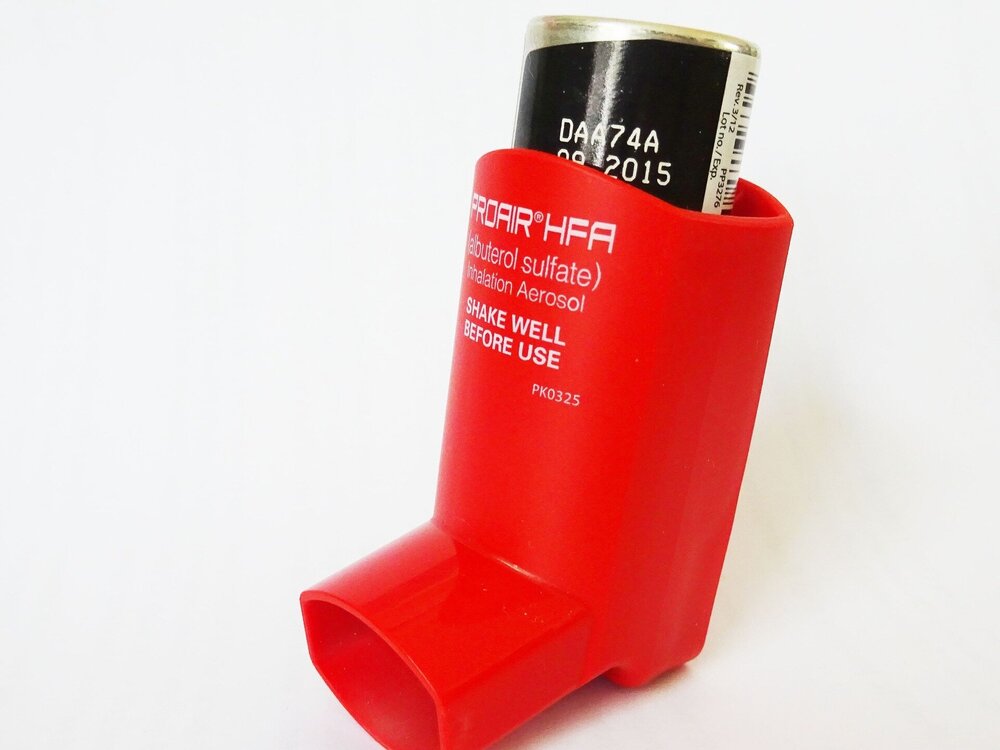January 16, 2020
How Poor Indoor Air Quality Is Affecting Your Asthma

Did you know that approximately nine percent of adults and seven percent of kids in Utah have asthma?
Unfortunately, the Utah Department of Health reported in 2018 that the prevalence of asthma in the population of Utah is increasing.
Both outdoor and indoor air quality in Utah can be quite polluted, which can trigger or worsen asthma symptoms for Utah residents.
How poor outdoor air quality in Utah affects people with asthma
It’s no secret that Utah’s outdoor air quality is decreasing. Especially in these colder winter months, the inversion effect dramatically reduces the quality of air in Utah. When a temperature inversion happens, a layer of warm air traps cooler air below it. This keeps the colder, more polluted air closer to the ground, meaning we are breathing more highly polluted air for a longer amount of time than we normally would.
People with asthma are more prone to experience reactions to pollutants trapped in the air by inversions, because these pollutants tend to cause inflammation in the lungs, especially ones that are already sensitive.
How poor indoor air quality affects people with asthma in Utah
Additionally, the inversion effect doesn’t just impact outdoor air quality. This polluted air can infiltrate houses through open doors, windows, chimneys, and vents.
This is a prime example of why indoor air quality is an important factor for Utahns with asthma to pay attention to, especially considering that Americans tend to spend up to 90% of their time indoors. In fact, indoor air has actually been found to be two to five times more polluted than outdoor air. Spending so much time in poor indoor air quality can contribute to increased asthmatic symptoms and attacks.
Common irritants found in Utah homes that can trigger asthma attacks include dust mites, pollen, pet dander, cleaning chemicals, and mold. Smoking tobacco, or being exposed to second-hand smoke, is another common culprit for many asthma attacks.
A survey by the Utah Department of Health found that almost two-thirds of the Utahns with asthma who participated in the survey let their pets in their bedroom, meaning they are more likely to breathe in pet dander in their rooms and possibly have their symptoms triggered.

Seasonal considerations about indoor air quality for people with asthma in Utah
Fall and winter
Burning wood or gas in our fireplaces in Utah’s colder months also increases indoor air pollution and can irritate people’s lungs. Furthermore, in the fall and winter, Utah residents are more likely to bring their pets indoors more often to keep them safe from the cold. Being around their pets more often increases people’s exposure to pet dander and can cause an increase in asthma triggers.
Plus, turning on your home’s heater after a long time of no use can stir up dust mites and other pollutants in the air ducts. This means that whenever the heater is on, it is not only blowing warm air throughout your home, but also whatever particles have built up in the air vents.
Spring and summer
Warmer weather in the spring often means opening the windows of your home and being in a little less of a hurry to close your door when you go back inside your house. Finally, we can let fresh air in without freezing ourselves and everything in our house!
Springtime weather feels great for sure, but springtime allergies in Utah definitely don’t. During the spring months, Utah’s pollen count goes through the roof, causing intense allergies for residents. For people with asthma, this can trigger their symptoms or worsen the ones they already have.

Similarly to what can happen with using your heater in the winter, running your air conditioning unit in the summer can distribute pollutant particles collecting in your home’s air vents throughout your home.
How you can increase indoor air quality in your home to help your asthma
It is clear that irritants and pollutants from the air in Utah homes are key triggers for asthma attacks, so what can we do about it? It is important to implement steps to eliminate those particles as much as possible and try to increase your in-home air quality.
Buying an air purifier for your home is an excellent place to start in getting rid of all the irritants and pollutants floating in the air in your home. There are many great purifiers to choose from, with lots of different features, purifying methods, and price points. To make it easier for you to find the best fit for your needs, we put together a list of the top ten best in-home air purifiers for Utah homes.
Cleaning the air ducts in your Utah home is also an important step to increase your indoor air quality. As we mentioned earlier, common asthma irritants often get stuck in air vents and cause a significant buildup that blows throughout your home whenever you run your heating or cooling systems. Regular air duct cleanings help prevent major build up and makes sure that you aren’t breathing in pollutants just because you have your air conditioning or heating system on. The beginning of fall or summer are both great times of the year in Utah to have your home’s air ducts cleaned, since those are transition times in between more frequent use of your HVAC systems.
If you’re interested in a free inspection of your house’s air ducts to see how dirty they are and what in your vents might be affecting your asthma, Crystal Clean Vents offers free inspections to Utah residents. Give us a call at: 801-561-0924 or click here to schedule your inspection today!

Leave a Reply